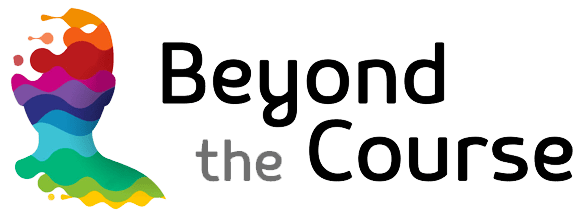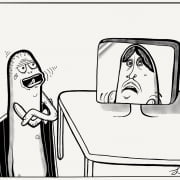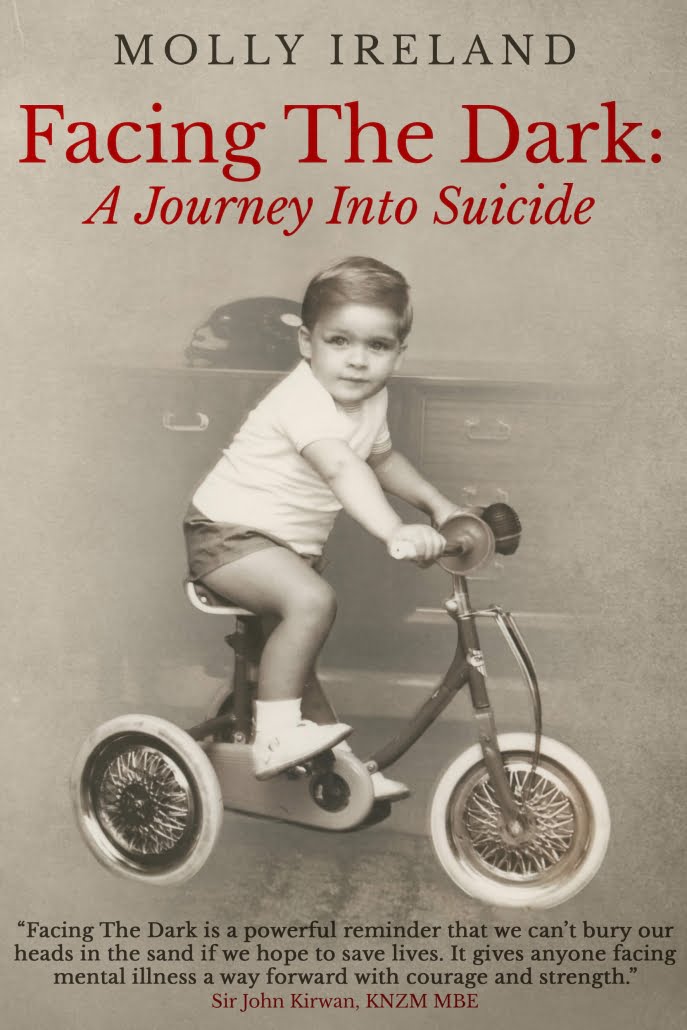Digital Body Language
Your body language is always saying something.
An earlier post discussed the importance of body language in person; this one looks at it during video conferences. We spend a lot of time in meetings and many of them, thanks to companies like Zoom, and Google Hangouts, are held digitally, offering richer ways to communicate.
And we’ve now mostly overcome poor connections, lag times and frozen images, but it’s still not like communicating in person. There is a divide between us which means that, even as we focus on our words, we have to make sure our bodies are reinforcing and not detracting from them.
What Not To Do
A few years back, I watched a CEO give an entire video presentation bent over his notes in front of him while everyone viewed the top of his balding head. Because the angle was wrong and the camera was too close to him, when he did occasionally glance up, his eye movements looked exaggerated and he appeared agitated, plus his hands kept flying in and out of frame as he talked. Another time, I spent an entire video conference staring at the underside of the presenter’s chin, wondering when it would end.
When we’re not physically in the same room as another person, we need to check a few things before starting. We also need to be more precise with digital body language because we aren’t able to compensate as quickly and may not notice if our message is off track. In other words, per the examples above …
We can’t get away with body language faux pas in the same way we can in person.
The reason for this is simple: screens are separating us from one another, and we’re not as aware of how we’re coming across to the other person.
Digitally it’s harder to detect microexpressions and subtle shifts in body language.
During video conferences, it’s easier to hide behind our words because we’re not sitting in front of an actual person. There’s a disconnect, and we “forget” that we’re actually visible. This makes it more likely we’ll retreat into our notes or agendas, especially if we’re even slightly uncomfortable with videoconferencing.
Furthermore, physical body movements are exaggerated digitally, especially when they go off-screen; if you stand up and move away from the camera it can feel more abrupt than intended. However, slight head nods, glances – particularly front and back ones – and facial micro-expressions are more subtle.
So, we need to know what to pay closer attention to so that we can accurately decode the other person’s subconscious messages.
Here are a few points:
- Check Your Angle and Frame – figuring out the angle and positioning of your camera before you start is critical. So is framing. If you speak with your hands, which by the way, makes us more effective communicators, make sure that when you gesture your hands stay in visual range. For good eye contact, position your laptop or desktop monitor straight on and at eye level. If the screen starts just above your head and finishes at your waist, you’re the right distance from the camera. You want to take up the other person’s monitor but not be too close so that you’re in their face.
- Check Lighting and Background – make sure that the lights are on and that there’s nothing to distract viewers behind you. It’s also important to think about what you wear. Most TV news presenters avoid wearing white on camera because it makes them looked washed out and insipid. Brighter colours are more impactful on-screen.
Best practice for digital presenting is to look directly at your camera not the other person’s screen.
- Establish Eye Contact – Wait for the other person to look at you directly before speaking. Good eye contact builds trust in communications, but it is especially critical digitally. It’s like making sure the bridge is open before driving your car across.
Communication is all about connection.
- Maintain Eye Contact – As a participant, it’s easier to drift off or get distracted, so keeping contact with our eyes is even more important than in person. Avoid checking the picture of yourself in the corner too often. It’s okay to use it at the start of a meeting to check your body position and to make sure your hair is in order, but when you focus on yourself too much, it’s harder to connect to the other person. Once you get set-up properly, you can minimise yourself on-screen to avoid this distraction.
- Limit Notes – Occasionally glancing down to read from your notes is fine, but if you’re going to refer to them constantly, have one set on the table, and then place sticky notes with short bullet points right below or next to the camera lens. That way you won’t be breaking eye contact so often.
It’s fine to look at the screen when others are speaking. Just remember to move your eyes back to the camera when you reply.
- Don’t Cross Your Arms – Research done by authors and body language experts Allan and Barbara Pease found that a person remembers thirty-eight percent more of what they hear when their arms are uncrossed compared to when they are crossed. This is an important tip to consider.
Crossed arms signal a closed mind or that you’re not paying attention.
- Focus on the Face – Look for microexpressions as an indicator of how the person is receiving your message. Professor Ulf Dimberg at Sweden’s Uppsala University conducted research that revealed how the subconscious mind exerts direct control of facial muscles; he found that people cannot fully control their expressions consciously, and because of this, subtle shifts give us a lot of accurate information about the other person.
- Limit Sudden and Excessive Movement – Avoid abrupt movements of the body unless you communicate what you’re doing beforehand. Nervous foot or finger tapping, playing with your hair, and other forms of fidgeting are distracting digitally.
- Use Both Hands – Research shows that using both hands when we connect by video is better than using just one. This is because you want to guard against looking stilted and emotionless. Using your hands naturally to make your point will help you express nonverbal signals of relaxation, empathy, likeability, and warmth, as does leaning forward slightly and smiling.
- Smile – Sometimes we get too serious at work. But the research shows that the more we smile the more people will respond to us positively. Happiness and laughter are contagious. They also make it more likely that people will take on our ideas. Allow your whole face to smile when you do so to come across authentically. I tell my clients to smile with their eyes!
There is no doubt that using a visual medium can be a powerful way to connect with people, but you need to be aware of your body language and how it supports or detracts from your messaging.
Put these pointers to work today to increase your persuasiveness with others. And stay tuned for more or get in touch. I’d love to hear from you.






